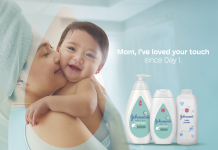Your nose sends messages to the brain even before the food even enters the mouth so that you can determine whether or not you should eat it.
A foul smell and the brain will tell you to reject the food. A desirable smell and you want to eat. Your sense of smell and taste are so closely related that they can even get confused.
Try this experiment to see how accurate your taste buds are with and without the help of your nose.
What you need:
- cotton swabs (we used spoons)
- a variety of foods with similar textures (We used ketchup, mayonnaise, soy sauce, vinegar, mustard, honey and syrup)
- pen and paper for charting
What to do:
- Check with a grown-up before you get started to make sure it’s okay to taste some different foods in your house.
- Ask a friend to help. One of you will be the taster and the other the tester, but you can switch at the end so both of you will get a chance to taste.
- Draw a chart for recording your results. Write the name of each food you are testing in separate rows along the left side. Draw three columns for each taster. Label each column with the taster’s name and “unplugged, plugged and mixed up”.
- Make some predictions about which foods will be easier and harder to identify. Will it be easier or harder to taste the foods with your nose plugged or unplugged?
- Blindfold the taster or just have her close her eyes.
- The tester then puts a little bit of one food on the taster’s tongue with a cotton swab.
- The taster tries to identify which food she tastes as well as whether it is salty, bitter, sweet or sour.
- The tester records the taster’s answers on the chart for each food she tastes.
- When the taster has tried all the foods blindfolded, have her taste them each again but with her nose plugged as well. (Make sure you have her taste the foods in a different order.)
- Once the taster has tried each food with her nose plugged, switch who tastes and who tests and go through it all again.
- You can now use the mixed up method. This is to let the blindfolded person smell one food while tasting another.
When you’ve both had a chance to taste, compare your results. The results from the mixed up column can be the most… mixed up.




